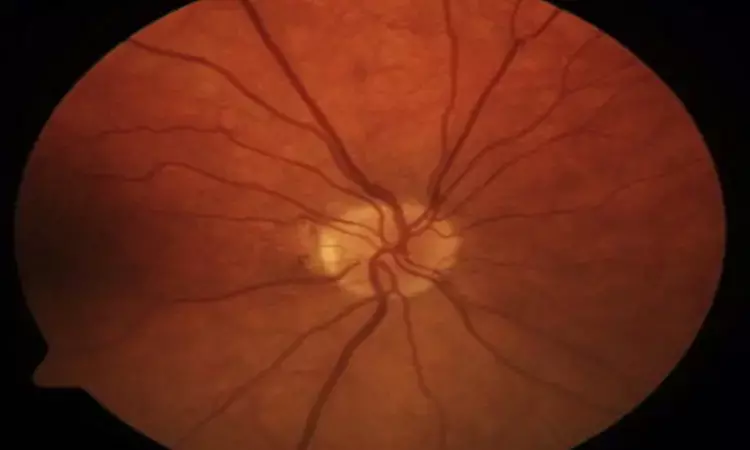- Home
- Medical news & Guidelines
- Anesthesiology
- Cardiology and CTVS
- Critical Care
- Dentistry
- Dermatology
- Diabetes and Endocrinology
- ENT
- Gastroenterology
- Medicine
- Nephrology
- Neurology
- Obstretics-Gynaecology
- Oncology
- Ophthalmology
- Orthopaedics
- Pediatrics-Neonatology
- Psychiatry
- Pulmonology
- Radiology
- Surgery
- Urology
- Laboratory Medicine
- Diet
- Nursing
- Paramedical
- Physiotherapy
- Health news
- Fact Check
- Bone Health Fact Check
- Brain Health Fact Check
- Cancer Related Fact Check
- Child Care Fact Check
- Dental and oral health fact check
- Diabetes and metabolic health fact check
- Diet and Nutrition Fact Check
- Eye and ENT Care Fact Check
- Fitness fact check
- Gut health fact check
- Heart health fact check
- Kidney health fact check
- Medical education fact check
- Men's health fact check
- Respiratory fact check
- Skin and hair care fact check
- Vaccine and Immunization fact check
- Women's health fact check
- AYUSH
- State News
- Andaman and Nicobar Islands
- Andhra Pradesh
- Arunachal Pradesh
- Assam
- Bihar
- Chandigarh
- Chattisgarh
- Dadra and Nagar Haveli
- Daman and Diu
- Delhi
- Goa
- Gujarat
- Haryana
- Himachal Pradesh
- Jammu & Kashmir
- Jharkhand
- Karnataka
- Kerala
- Ladakh
- Lakshadweep
- Madhya Pradesh
- Maharashtra
- Manipur
- Meghalaya
- Mizoram
- Nagaland
- Odisha
- Puducherry
- Punjab
- Rajasthan
- Sikkim
- Tamil Nadu
- Telangana
- Tripura
- Uttar Pradesh
- Uttrakhand
- West Bengal
- Medical Education
- Industry
Shunting a more frequent treatment than ONSF for pseudotumor cerebri syndrome: JAMA

USA: Shunting is used more frequently than optic nerve sheath fenestration (ONSF) for treatment of pseudotumor cerebri syndrome (PTCS), suggests a recent study in JAMA Network Open.
The findings reflect underlying trends in medical treatment practices and outcomes or growing limitations in access to ophthalmic surgical expertise.
Optic nerve sheath fenestration and cerebrospinal fluid shunting are used sometimes for the treatment of pseudotumor cerebri syndrome but their use patterns are not known. To fill this knowledge gap, Ali G. Hamedani, University of Pennsylvania, Philadelphia, and colleagues aimed to investigate the frequency of surgical PTCS treatment in the United States and to compare patients undergoing ONSF with those treated with shunting.
For the purpose, the researchers set up a retrospective longitudinal cross-sectional study. They obtained inpatient data from the National Inpatient Sample (NIS), and outpatient surgical center data from the National Survey of Ambulatory Surgery (NSAS) and National Hospital Ambulatory Medical Care Survey (NHAMCS).
The analysis included 10 720 patients (18 to 65 years) with a diagnosis code for PTCS. Patients with venous thrombosis and intracranial hypertension were excluded. Time trends were explored and logistic regression was used to measure differences according to age, race/ethnicity, sex, Elixhauser comorbidity index, and other patient and hospital characteristics. Data analysis was performed from March 31 to October 7, 2020.
The outcomes included annual number of PTCS-related admissions, ONSFs, and shunt procedures from 2002-2016. Patient and hospital-level characteristics of patients with PTCS undergoing ONSF or shunting were compared.
Key findings of the study include:
- Between 2010 and 2016, 297 ONSFs were performed and 10 423 shunts were placed as treatment for PTCS.
- The procedures were most commonly performed in individuals aged 26 to 35 years (39.4%), and 9920 (92.4%) of the surgically treated patients were women.
- ONSF was more common among younger patients (eg, adjusted odds ratio [AOR] for patients ≥46 years vs those 18-25 years, 0.22) and in Black, Hispanic, or other minority populations (AOR, 2.37) and less common in the South (AOR, 0.34) and West (AOR, 0.15) compared with the Northeast.
- Total PTCS-related hospitalizations increased from 6081 in 2002 to 18 020 in 2016. Shunting increased from 2002 to 2011 and subsequently plateaued and declined.
- ONSF was used much less frequently, and use has not increased.
- No instances of outpatient ONSF or shunting for PTCS were recorded in the NSAS or NHAMCS databases.
"Findings from our study suggest that shunting is more common than ONSF and that the use gap has widened as shunting has increased. However, because overall PTCS-related hospitalizations have increased even more rapidly, the percentage of inpatients with PTCS undergoing surgery has decreased," wrote the authors.
"These trends may reflect changes in medical treatment practices and outcomes or growing limitations in access to ophthalmic surgical expertise," they concluded.
The study, "Trends in the Surgical Treatment of Pseudotumor Cerebri Syndrome in the United States," is published in the journal JAMA Network Open.
DOI: https://jamanetwork.com/journals/jamanetworkopen/fullarticle/2774167
Dr Kamal Kant Kohli-MBBS, DTCD- a chest specialist with more than 30 years of practice and a flair for writing clinical articles, Dr Kamal Kant Kohli joined Medical Dialogues as a Chief Editor of Medical News. Besides writing articles, as an editor, he proofreads and verifies all the medical content published on Medical Dialogues including those coming from journals, studies,medical conferences,guidelines etc. Email: drkohli@medicaldialogues.in. Contact no. 011-43720751


